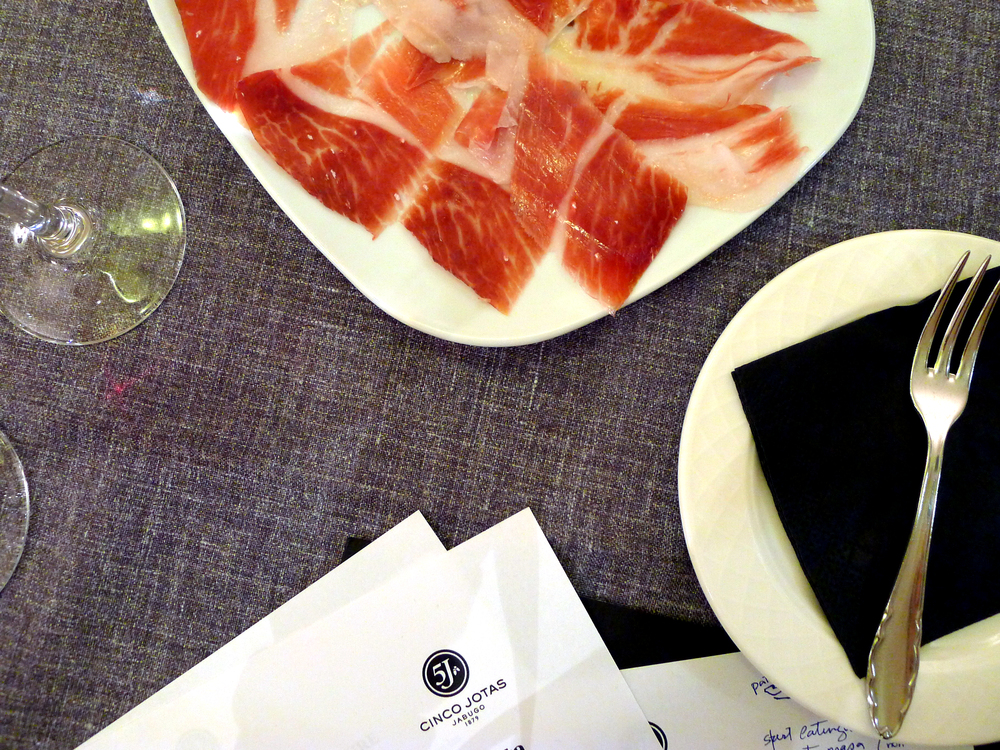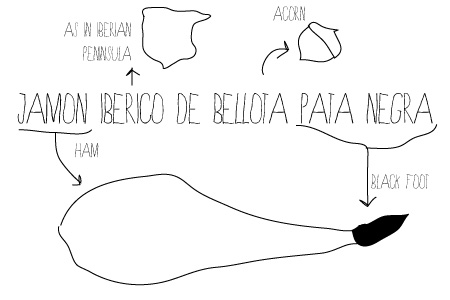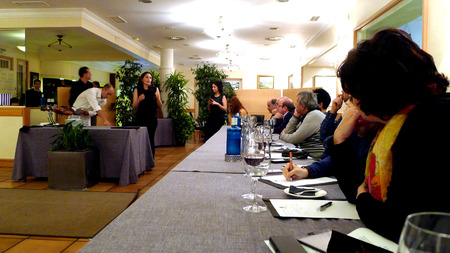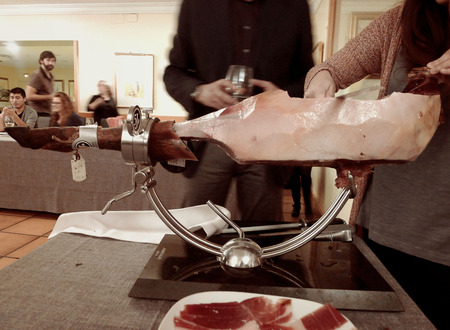All About Jamón

It takes a pig consuming 11 lbs acorns to produce 1 lb of jamón ibérico.
The only thing jamón producers in Jabugo have to do for temperature control in the curing rooms is open and close the windows. #whylocationmatters
When cutting jamón ibérico, you know your slice is thin enough when you can see the knife through the meat.
In some jamón producers, pork is tested in labs on its way to being cured to assure proper consumption of acorns.
These are the kinds of facts you learn when you attend a ham tasting. Of course, being that I’m reporting from the Iberian peninsula, we’re not talking about just any ham. We’re talking about jamón. Jamón ibérico de bellota pata negra.

At the 5 Jotas Cutting Workshop and Tasting, I and several other San Sebastián food world folks watched Iñigo Altuna, an expert slicer of jamón, show us how to properly deconstruct one of the 5 Jotas ham.
Maybe you’re not so familiar with the world of Spanish ham. Most of it is delicious, but there are some key factors in differentiating an excellent ham from a run-of-the-mill cured pig. They are factors such as race. Is your pig Duroc? Or is it 100% ibérico? This is going to affect the growth rate of the pig and the flavor. And then key is the nourishment your pigs are receiving. Acorns is the key word here. Climate, technique, and time are also keys. There’s no rushing this kind of perfection.
5 Jotas is a 100 % ibérico ham, whose happy happy pigs walk an average of 10 miles a day in search of acorns before they are turned into happy happy hanging legs, curing in the dry air of Jabugo. And you can taste it.
I like to imagine the four people they have preserving and curing ALL of their ham, working on their happy happy jamón assembly line: one to transport the pork legs into the curing area, one to oil the leg, another to brush it with salt, and the fourth to hang.
Which one would you be? ( I call the one who eats it three years later).

